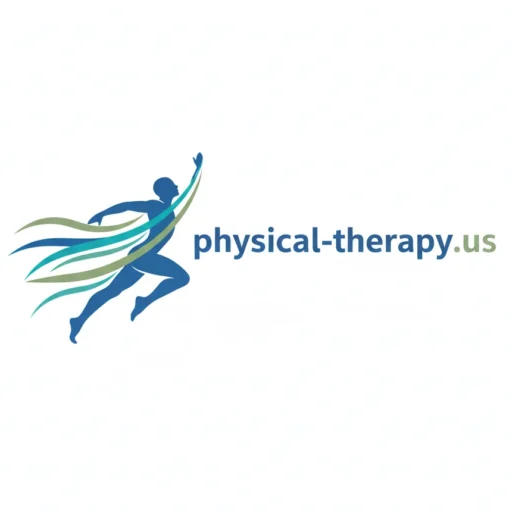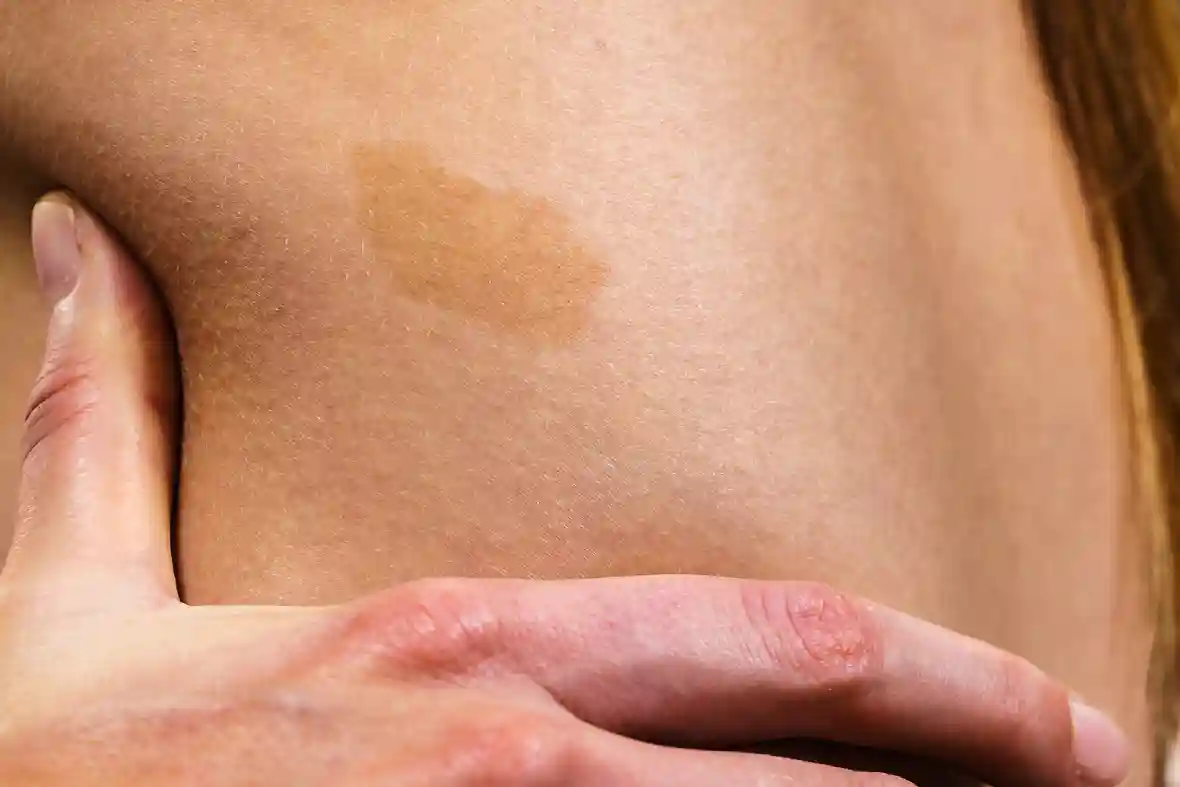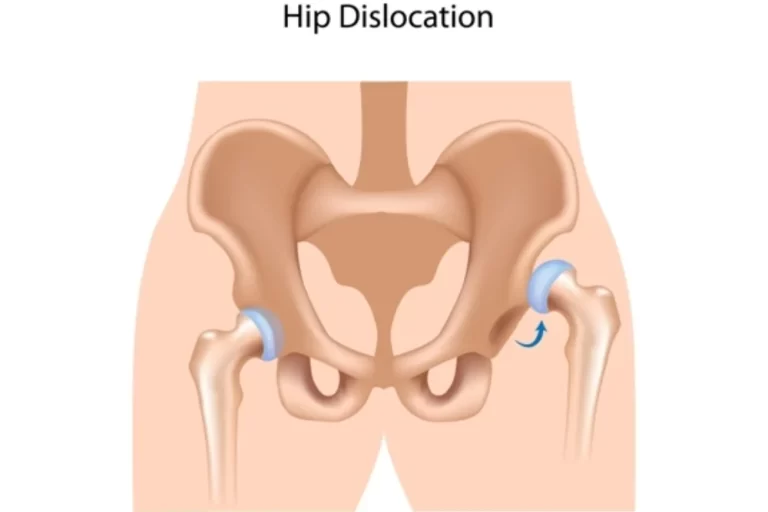Café-Au-Lait Spots
Introduction
Light to dark brown pigmented birthmarks known as café-au-lait spots are frequently seen on a newborn’s skin. Over time, the number and size of spots may vary. Over six café-au-lait spots may indicate neurofibromatosis type 1 (NF1) or another underlying genetic disorder.
Flat, hyperpigmented birthmarks are known as café au lait spots or café au lait macules. The French phrase “coffee with milk” (café au lait) describes their light-brown color. They are caused by a group of melanocytes in the skin’s epidermis that produce pigment. Usually permanent, these patches may enlarge or multiply over time.
Flat patches on the skin are the hallmark of a particular kind of birthmark known as café au lait spots. At first, they are light brown, but exposure to sunlight can darken them. Because they frequently have uneven borders and differ in color, these marks are easily recognized.
Café au lait locations can also differ in size. Spots as small as half a centimeter can occur. Although they may appear later in life, the spots are typically present from birth. Some people may have one to three café au lait spots, which are common and safe. However, these spots can occasionally be a sign of a hereditary condition. What you should know about café au lait spots, including when to consult a physician about them, is provided below.
Importance of Café-Au-Lait Spots
- About 10% of people in the general population own one or two café-au-lait spots. It is uncommon to have six or more café-au-lait spots, sometimes known as many CALS. While several café-Au locations by themselves do not cause health problems, they may be linked to certain diseases that may result in further health problems. Thus, if your child has more than five spots, more spots grow over time, or your child has other physical, medical, or developmental problems, your doctor may keep an eye on them and become suspicious.
- Neurofibromatosis type 1 (NF1) is the most prevalent disorder to multiple CALS. It is crucial to consult a specialist who can accurately diagnose NF1 because other illnesses may mimic it.
Café-au-lait spots: what are they?
Pigmented birthmarks known as café-au-lait (CAL) spots are light to dark brown patches on your skin that are different in tone from the rest of your skin. The French expression “café-au-lait,” which translates to “coffee with milk,” compares the birthmark’s color to the creamy tone of a cup of coffee mixed with milk. The diameter of these birthmarks can vary from a few millimeters to over 20 centimeters.
CAL patches appear on the skin in early childhood or are present on newborns. Adults may also develop them.
What is neurofibromatosis type 1 (NF1)?
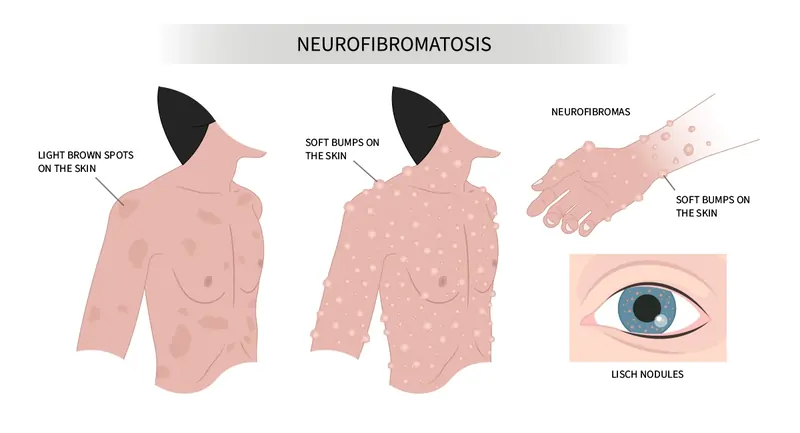
- In addition to many other symptoms, neurofibromatosis type 1 (NF1) is a hereditary disorder that results in tumors growing on nerves all over the body. Although these spots can occasionally occur in other related illnesses, which are listed below, clinicians most frequently consider NF1 when numerous CALS are present. Approximately one out of every 2,500 people has NF1.
- Nearly all people with NF1 have six or more café-au-lait spots. CALS is frequently the first obvious symptom of NF1 and usually appears in the first few years of life. The number of CALS more than 0.5 cm in children before puberty and the number greater than 1.5 cm in young people and adults beyond puberty will be assessed by a specialist.
With time, further NF1 symptoms could arise and become invisible without the assistance of a qualified healthcare provider. Monitoring is necessary since the other related characteristics may result in symptoms and other health problems. For these concerns, more NF1 symptoms should be monitored.
Epidemiology
Café-au-lait (CAL) spots are prevalent in kids. 10% of people are thought to have at least one CAL spot. An estimated 95% of individuals with neurofibromatosis type 1 (NF1) have more than six CAL spots.
What kinds of café-au-lait locations are there?
Based on its shape and design, café-au-lait (CAL) places can be divided into two categories.
- California Coast: The most prevalent kind of CAL spot is found along the California coast. The area resembles the form of the California coast in the United States in that it has smooth, distinct borders on all sides. A single spot or several CAL spots with distinct edges may be present.
- Coast of Maine: A less frequent kind of CAL spot is found along the Maine shoreline. Similar to the U.S. state of Maine’s coastline boundary, the locations appear to have a rough, jagged border.
See your healthcare practitioner if you have more than one California coast CAL spot. Numerous CAL spots may be a sign of an underlying disorder that affects your skin and nervous system, such as neurofibromatosis (NF1) or other hereditary abnormalities.
Causes of café-au-lait spots
Café-au-lait (CAL) spots are caused by an increase in the number of skin cells (melanocytes) in the thin outer layer of your skin (epidermis) that create the protective pigment that darkens skin (melanin). There is no recognized cause for the rise of melanocyte cells.
A mutation in the NF1 gene causes CAL patches in persons with neurofibromatosis type 1 (NF1). Melanocytes in your skin create too much melanin because the NF1 gene stops cells from developing too fast.
Sometimes the NF1 gene mutation happens at random and is not associated with a person’s family history, but other people can inherit this disorder from their parents if one of them possesses an autosomal dominant copy of the NF1 gene. In contrast to all other autosomal dominant disorders, which are activated in children by a single defective gene, NF1 does not manifest until a genetic mutation of the individual’s second copy of the NF1 gene arises later in life.
There are several different and unconnected reasons why café au lait spots may appear:
- Ataxia–telangiectasia
- Basal cell nevus syndrome
- Benign congenital skin lesion
- Bloom syndrome
- Chédiak–Higashi syndrome
- Congenital melanocytic naevus
- Fanconi anemia
- Fibrous dysplasia of bone
- Gaucher disease
- Hunter syndrome
- Legius syndrome
- Maffucci syndrome
- They can be caused by vitiligo in the rare McCune–Albright syndrome.[8]
- Multiple mucosal neuroma syndrome
The diagnosis of neurofibromatosis type I (NF-1) requires the presence of six or more café au lait spots that are larger than 5 mm in diameter before puberty or more than 15 mm in diameter following puberty. There have been reports of familial multiple cafe-au-lait spots without an NF-1 diagnosis.
- Noonan syndrome
- Silver–Russell syndrome
- Tuberous sclerosis
- Watson syndrome
- Wiskott–Aldrich syndrome
Symptoms
The appearance of café-au-lait (CAL) patches on the skin distinguishes them from other birthmarks. CAL spots have the following qualities:
- Flat skin spots, usually found on the arms, legs, buttocks, and torso.
- The color range is light brown to dark brown.
- Rounds or oval in shape, with a diameter ranging from 2 millimeters to over 20 centimeters.
- The location is surrounded by a stiff or smooth border.
- With aging, spots may increase in size and quantity.
- Spots don’t hurt and don’t make you itchy or produce other symptoms.
Café au lait spots don’t itch or hurt because they aren’t an allergic reaction or rash. Although the appearance of a spot on your body can be concerning, café au lait spots are pigmented lesions that are benign and do not lead to malignancy.
While some of these locations may be elevated, most of them are smooth. Additionally, the spots are easily recognized by their coffee-like hue. While some individuals with café au lait spots have dark brown patches, others have lighter ones. As we age, lighter areas may also turn darker.
An underlying genetic condition known as neurofibromatosis type 1 may be indicated by six or more café au lait spots with freckles under the arm or around the groin, even if these colorful patches on the skin may be benign.
This condition can impact the eyes, nerves, and skin. Multiple café au lait spots on various body areas are common in people with this condition. While some spots emerge before the age of five, others are present from birth. See a doctor if you (or your kid) have colored patches on your skin, lumps under the skin, or trouble speaking, because this hereditary disorder can develop abnormalities in the bones and language. This condition can also lead to seizures, high blood pressure, and visual issues.
Your doctor may arrange for routine checkups if you have been diagnosed with neurofibromatosis. Nonetheless, some patients with this disease do not have any issues.
Other symptoms of NF1 may include:
- Large head size (macrocephaly)
- Height less than expected based on the height of parents (short stature)
- Speech and/or language delays
- Joint hypermobility and hypotonia, or low muscle tone, can cause weariness or soreness during exertion or delays in motor development.
- Learning disabilities (usually not significant intellectual disability)
- Attention deficit disorder with or without hyperactivity (ADD/ADHD)
- Curvature of the spine (scoliosis)
- High blood pressure (hypertension)
NF1 is a very erratic condition. The severity varies from extremely mild cases, where a few neurofibromas and several café-au-lait spots may be the only adult symptoms, to more severe cases, when more significant issues arise. Over time, NF1 symptoms and indicators may appear gradually and even fade away.
Undiscovered for a long time. People with NF1 require ongoing monitoring at intervals determined by their healthcare professional.
Which conditions are characterized by café-au-lait spots?
Several (more than six) café-au-lait spots may indicate a hereditary disorder, such as:
- Type 1 neurofibromatosis (NF1).
- McCune-Albright syndrome.
- Noonan syndrome.
- Watson syndrome.
See your child’s doctor if you observe that your youngster has more than six café-au-lait spots on their body.
Who is impacted by café-au-lait spots?
Anyone can be impacted by café-au-lait (CAL) spots. Although it could be difficult to spot on a newborn’s skin, the birthmark is congenital, meaning it was there from birth. As people age, the spots grow more noticeable, particularly after two years.
Although birthmarks can affect everyone, CAL spots are more common in those with darker skin tones. Certain CAL spots are associated with hereditary disorders, meaning that they are inherited traits that run in your family. Discuss genetic testing with your healthcare practitioner to learn more about your chance of having a child with a genetic problem.
Diagnosis
Following delivery, your child’s doctor will perform a physical examination to ensure your child is healthy. They will record any birthmarks on your child’s body, including café-au-lait spots, during this examination and urge you to monitor the number of birthmarks your child has as they get older. Spots may not be completely seen on your infant, but they may become more noticeable after two years of age or after exposure to sunlight.
How do I find out if my kid has NF1?
Medical practitioners use some of the most commonly recognized characteristics of NF1 as diagnostic criteria. A person may be diagnosed with NF1 if they exhibit two or more of the following symptoms:
At least six macules (CALM) or café-au-lait spots (CALS)
The majority of CALS forms in infancy and early childhood, while some may be present at birth.
On the skin, CALS are light brown dots of a particular size.
Freckling in the inguinal (groin) or axillary (under the arms) regions
Skin-fold freckling usually appears between the ages of two and five.
One plexiform neurofibroma or two or more neurofibromas of any kind
- The most prevalent development in NF1 is neurofibromas, which are benign nerve tumors. Although they can develop in any nerve in the body, neurofibromas are most noticeable on or immediately beneath the skin’s surface.
- Although neurofibromas can grow at any age, they often do so during pregnancy and puberty.
- Plexiform neurofibromas are more intricate nerve tumors that typically spread out across the skin, beneath it, and in deeper body regions. Plexiform neurofibromas require more monitoring than other types of neurofibromas due to the higher risk of cancer. Although they may not be apparent at birth, plexiform neurofibromas are usually present.
Two or more choroidal abnormalities or Lisch Nodule
- Typically appearing in mid-to-late childhood, List nodules are darkly pigmented blemishes on the iris (colored circle) of the eye that do not impair vision. Since they are frequently too small to be noticed during a standard checkup, an eye doctor utilizes a powerful light and a microscope, sometimes known as a slit lamp, to detect them.
- The vascular (blood vessel) layer of the eye (choroid) is where choroidal disorders arise. These anomalies are only visible with sophisticated equipment used by eye experts and do not impair vision.
Optic circuit Glioma (OPG)
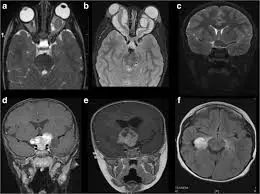
- These tumors develop along the brain’s visual circuit. Though only about ⅓ of people with an OPG need therapy, these are the most prevalent kind of brain tumors in NF1 and affect 20% of people. Usually, they start to form before the age of six. An optic pathway glioma may initially manifest as vision loss or an early growth spurt, or early commencement of puberty. It is advised that children with NF1 and those whose diagnosis is suspected but not yet confirmed undergo yearly eye exams.
A characteristic bone lesion like pseudoarthrosis of a long bone, sphenoid wing dysplasia, or anterolateral tibial bending (tibial dysplasia)
Although they might not be apparent right away, these findings are usually present from birth.
Sphenoid dysplasia is characterized by an anomaly in the eye socket’s structure and frequently poses little to no concern.
Pseudarthrosis is a weak spot on a bone that can arise from poorly healed fractures; tibial dysplasia is a curvature of the lower leg that may raise the risk for fractures with poor healing.
A pathogenic variation of NF1 Genetic testing finds a variation or alteration (formerly known as a mutation) in the gene that causes NF1.
Meets the diagnostic criteria for NF1
About half of NF1 patients have a parent with NF1.
A person is diagnosed with NF1.
If they meet two or more of the aforementioned diagnostic criteria. Nevertheless, many of these characteristics are absent in young people. Some medical professionals and families adopt the “wait and see” strategy, keeping an eye on the child over time to see if any new NF1 characteristics appear. Another possibility is genetic testing.
Differential Diagnosis
First, it’s important to distinguish CALMs from more general causes of hyperpigmentation, such as hemochromatosis, Addison’s disease, and phototoxic allergic reactions. These circumstances lack the circular, clearly defined borders found in the majority of CALMs.
Among the CALM’s differential diagnoses are:
- Congenital melanocytic nevus
- Becker nevus
- Nevus spilus
- Lentigo
- Urticaria pigmentosa
- Postinflammatory hyperpigmentation
- Plexiform neurofibroma
- Segmental pigmentation disorder
- Mastocytoma
- Phytophotodermatitis
Treatment
Since café-au-lait spots are benign (noncancerous) and do not produce symptoms, they do not require treatment.
Consult your healthcare professional about laser therapy if you wish to get rid of your café-au-lait spots for aesthetic purposes. Hyperpigmentation and scarring are possible side effects of laser treatment. Additionally, the pigmentation of the area may not entirely disappear or may reappear after removal. The disorder known as café au lait spots is benign and innocuous. They don’t need to be treated.
Getting laser treatment is one way to lessen the visibility of these spots. However, even if you get rid of these spots, they can come back later. Additionally, you can conceal café au lait spots using cosmetics.
Neurofibromatosis may be confirmed via genetic testing. If so, this condition has no known remedy. Your doctor may recommend several therapies to alleviate symptoms if you experience issues related to this ailment. These include speech therapy to help with language issues or medicine to control high blood pressure.
You might require surgery to remove the tumor or additional cancer treatments like chemotherapy and radiation if you acquire a benign or malignant tumor as a result of this illness.
Complications
One or two CALMs are safe if they don’t exhibit any signs of hereditary disorders. Multiple and segmental CALMs may serve as a marker for numerous genetic disorders. Cancers such as leukemias, ocular gliomas, and nerve sheath tumors can occur as a result of NF1. Rhabdomyoma, which resembles a heart tumor, may be linked to tuberous sclerosis.
Prevention
Birthmarks cannot be prevented, thus, there is no method to lower your risk of developing café-au-lait spots.
Before planning to become pregnant, discuss genetic testing with your healthcare professional to determine your risk of having a child with neurofibromatosis type 1 (NF1) if you have a family history of the disorder.
Prognosis
Your child has café-au-lait (CAL) spots from birth and will have them for the rest of their lives. Over time, the spots may alter in size and shape, and exposure to sunlight may make them more obvious. See your child’s physician to determine whether the spots could indicate an underlying genetic problem if your child develops more than six CAL spots on their body. Usually present from birth, café au lait patches are persistent and may enlarge or multiply with time.
In terms of themselves, café au lait spots are harmless and do not result in any diseases or issues. Nonetheless, they might be linked to conditions like McCune-Albright syndrome and neurofibromatosis type 1.
In terms of description, the spots can differ in size and shape. The spots in neurofibromatosis type 1 are typically characterized as oval and having smooth borders. In some conditions, the spots can be less ovoid, with jagged margins. The patches in neurofibromatosis type 1 have smoother, more linear borders and more closely resemble the “coast of California” than the “coast of Maine.”
FAQs
Can adulthood bring on a sudden appearance of café-au-lait spots?
Yes. Although café-au-lait (CAL) spots are most frequently found on a newborn’s skin, they can also appear on an individual’s skin at a later age. While having a few CAL spots is normal, having more than six spots could indicate an underlying medical problem. If you have more than six CAL spots on your body, regardless of age, get in touch with your doctor so they can check for an underlying problem.
Can someone with neurofibromatosis have café-au-lait spots?
Yes. Having a few café-au-lait spots on one’s body without having an underlying illness such as neurofibromatosis type 1 (NF1) is fairly frequent. In addition to other symptoms associated with their diagnosis, people with NF1 typically exhibit more than six café-au-lait spots on their bodies.
Are rash and café-au-lait spots the same thing?
CAL patches are not the result of an allergic reaction, despite their rash-like appearance. In contrast to rashes, which are pink to red, CAL patches are light to dark brown and do not produce any of the symptoms associated with a rash, such as itching.
NF1: Does it occur in families?
Fifty percent of NF1 patients have no family history of the disorder. A negative family history of NF1 does not rule out the diagnosis in this instance since NF1 is a novel, or de novo, genetic alteration.
The odds of an individual with NF1 having a kid with NF1 are 50/50, or 1 in 2. The parents of a child with NF1 have a less than 1% probability of having another child with NF1 if there is no family history. If you have specific questions, speak with your physician or genetic counselor.
What do spots for café-au-lait mean?
Light to dark brown pigmented birthmarks known as café-au-lait spots are frequently seen on a newborn’s skin. Over time, the number and size of spots may vary. Over six café-au-lait spots may indicate neurofibromatosis type 1 (NF1) or another underlying genetic disorder.
Why does café au lait occur?
Increased melanin in melanocytes and basal keratinocytes is the cause of CALMs. Although they are not unique to NF1, NF1-associated café au lait macules have increased melanocyte density, gigantic melanosomes, and stem cell factor cytokines.
Are stains from café au lait safe?
Usually benign and innocuous, café au lait spots don’t need to be treated. You might think about receiving laser therapy if you want these areas to be less obvious. Even after having café au lait spots removed, the pigmented lesions could reappear.
Can birthmarks be removed with lemon juice?
Even though some birthmarks can be made to appear better using natural therapies, they are usually not completely removed. Applying aloe vera or lemon juice over time has caused some people to report a slight fading of pigmented birthmarks, while the outcomes vary.
Reference
- Café-au-Lait spots. (2025, March 19). Cleveland Clinic. https://my.clevelandclinic.org/health/diseases/22627-cafe-au-lait-spots
- Wikipedia contributors. (2024a, February 11). Café au lait spot. Wikipedia. https://en.wikipedia.org/wiki/Caf%C3%A9_au_lait_spot#Treatment
- Higuera, V. (2018, April 11). Café au Lait Spots. Healthline. https://www.healthline.com/health/cafe-au-lait-spots
- Jha, S. K., & Mendez, M. D. (2023, July 31). Cafe au lait macules. StatPearls – NCBI Bookshelf. https://www.ncbi.nlm.nih.gov/books/NBK557492/
- Genet. (n.d.). WHAT ARE CAFÉ-AU-LAIT SPOTS? [Report]. https://www.ctf.org/wp-content/uploads/2023/11/CTF_PossibleNF1_CALS_Brochure.pdf
